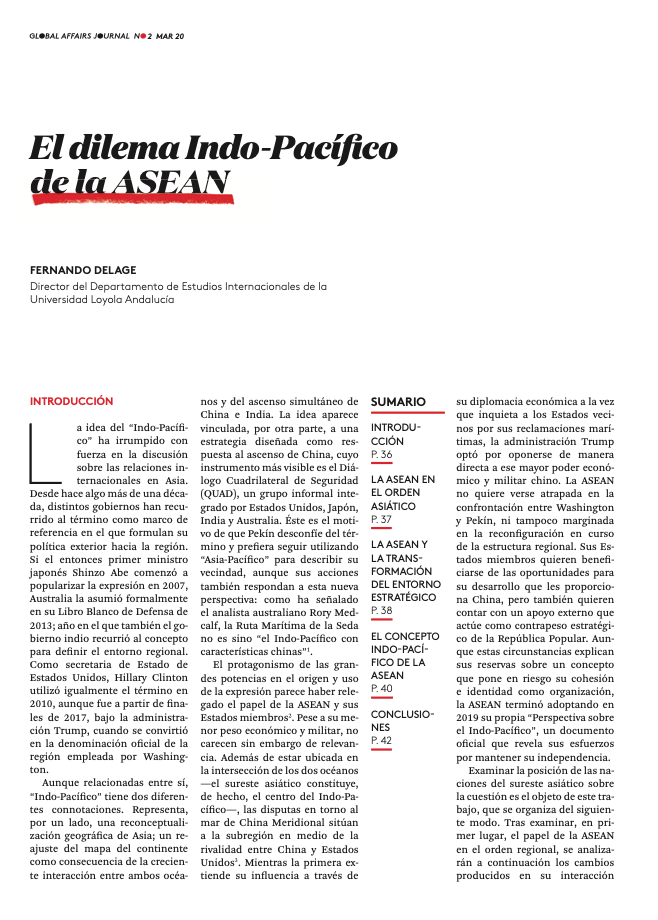
Chinese fortification on small disputed islands [CSIS satellite images].
JOURNAL / Fernando Delage
 [8-page document. PDF download ].
[8-page document. PDF download ].
INTRODUCTION
The idea of the "Indo-Pacific" has burst into the discussion on international relations in Asia. For a little over a decade now, various governments have been using the term as a framework of reference letter in which to formulate their foreign policy toward the region. If the then Japanese Prime Minister Shinzo Abe began to popularize the expression in 2007, Australia formally took it up in its 2013 Defense White Paper; a year in which the Indian government also resorted to the concept to define the regional environment. As US administrative assistant of State, Hillary Clinton similarly used the term in 2010, although it was as of late 2017, under the Trump administration, that it became the official designation of the region employed by Washington.
Although related, "Indo-Pacific" has two different connotations. It represents, on the one hand, a geographical reconceptualization of Asia; a readjustment of the map of the continent as a consequence of the growing interaction between the two oceans and the simultaneous rise of China and India. The idea is linked, on the other hand, to a strategy designed as a response to China's rise, whose most visible instrument is the Quadrilateral Security Dialogue (QUAD), an informal group made up of the United States, Japan, India and Australia. This is why Beijing is wary of the term and prefers to continue to use "Asia-Pacific" to describe its neighborhood, even if its actions also respond to this new perspective: as the Australian analyst Rory Medcalf has pointed out, the Maritime Silk Road is nothing more than "the Indo-Pacific with Chinese characteristics".
The prominence of the major powers in the origin and use of the expression seems to have relegated the role of ASEAN and its member states. Despite their lesser economic and military weight, they are nevertheless not without relevance. In addition to being located at the intersection of the two oceans - Southeast Asia is, in fact, the center of the Indo-Pacific - disputes over the South China Sea place the subregion in the midst of the rivalry between China and the United States. While the former extends its influence through its economic diplomacy while unsettling neighboring states over their maritime claims, the Trump administration chose to directly oppose this increased Chinese economic and military power. ASEAN does not want to be caught up in the confrontation between Washington and Beijing, nor does it want to be marginalized in the ongoing reconfiguration of the regional structure. Its member states want to benefit from the opportunities for development provided by China, but they also want external support to act as a strategic counterweight to the People's Republic. Although these circumstances explain its reservations about a concept that puts its cohesion and identity as an organization at risk, ASEAN ended up adopting its own "Indo-Pacific Perspective" in 2019, an official document that reveals its efforts to maintain its independence.